Column-I show graph of electric potential V versus x and y in a certain region for four situations. Column-II shows the range of angle which the electric field vector makes with positive x-direction
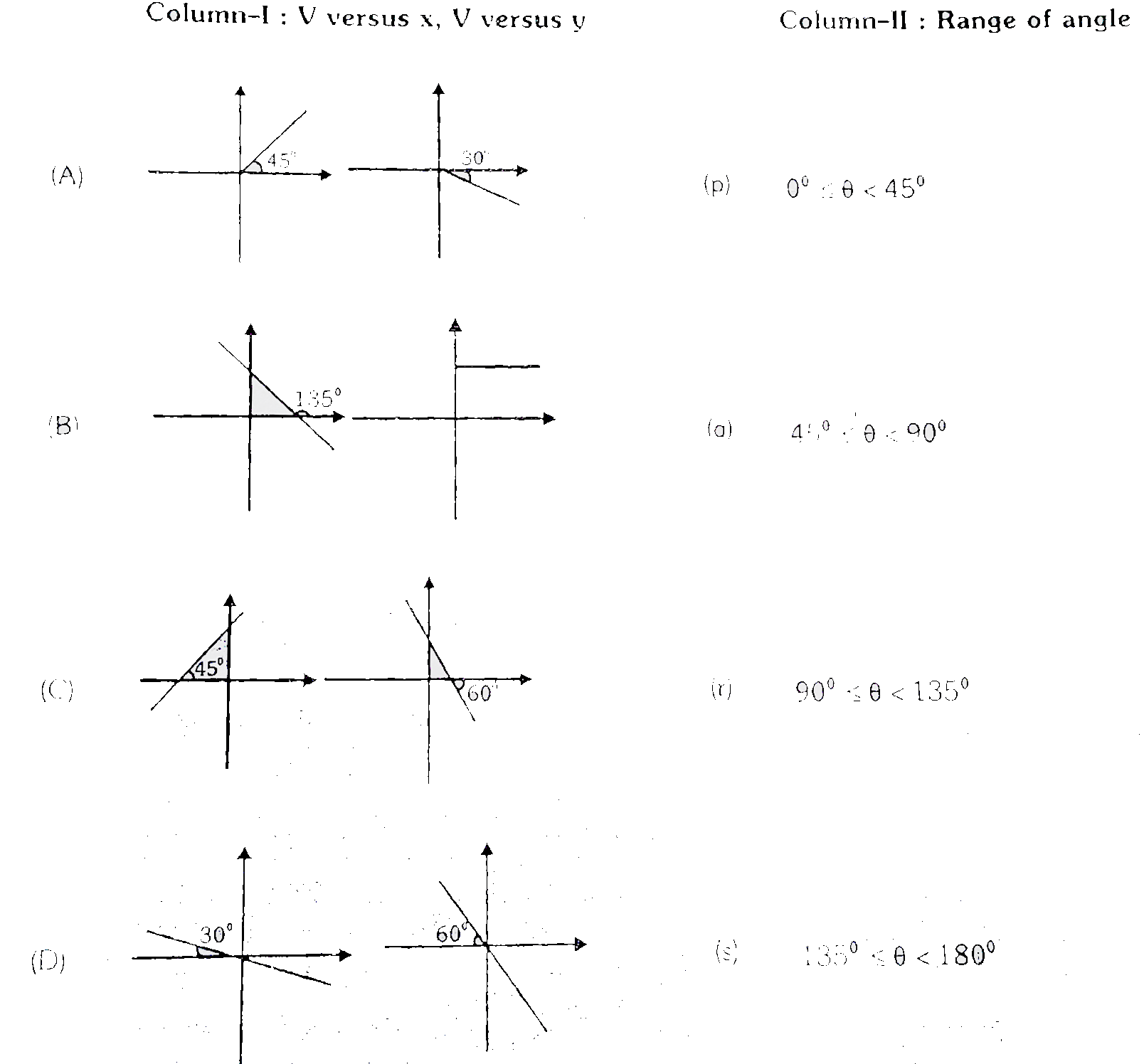
The correct Answer is:(A) s, (B) p, (C) r, (D) q
Electric field →E=−∂V∂xˆi−∂V∂yˆj
For (A): →E=−ˆi+1√3ˆj
For (B): →E=+ˆi
For (C): →E=−ˆi+√3ˆj
For (D): →E=+1√3ˆi+√3ˆj
Topper's Solved these Questions
- MISCELLANEOUSBOOK - ALLENCHAPTER - MISCELLANEOUSEXERCISE - ASSERTION-REASON
18 Videos
- MISCELLANEOUSBOOK - ALLENCHAPTER - MISCELLANEOUSEXERCISE - Comprehension 1
5 Videos
- MISCELLANEOUSBOOK - ALLENCHAPTER - MISCELLANEOUSEXERCISE - Exercise-01
87 Videos
- KINEMATICS (MOTION ALONG A STRAIGHT LINE AND MOTION IN A PLANE)BOOK - ALLENCHAPTER - KINEMATICS (MOTION ALONG A STRAIGHT LINE AND MOTION IN A PLANE)EXERCISE - BEGINNER S BOX-7
8 Videos
- PHYSICAL WORLD, UNITS AND DIMENSIONS & ERRORS IN MEASUREMENT BOOK - ALLENCHAPTER - PHYSICAL WORLD, UNITS AND DIMENSIONS & ERRORS IN MEASUREMENT EXERCISE - EXERCISE-IV
8 Videos
Similar Questions
Column I shows graphs of electric potential V versus x and Y in a certain region for four situations Column II shows the range of angle which the electric field vector makes with positive x-direction.
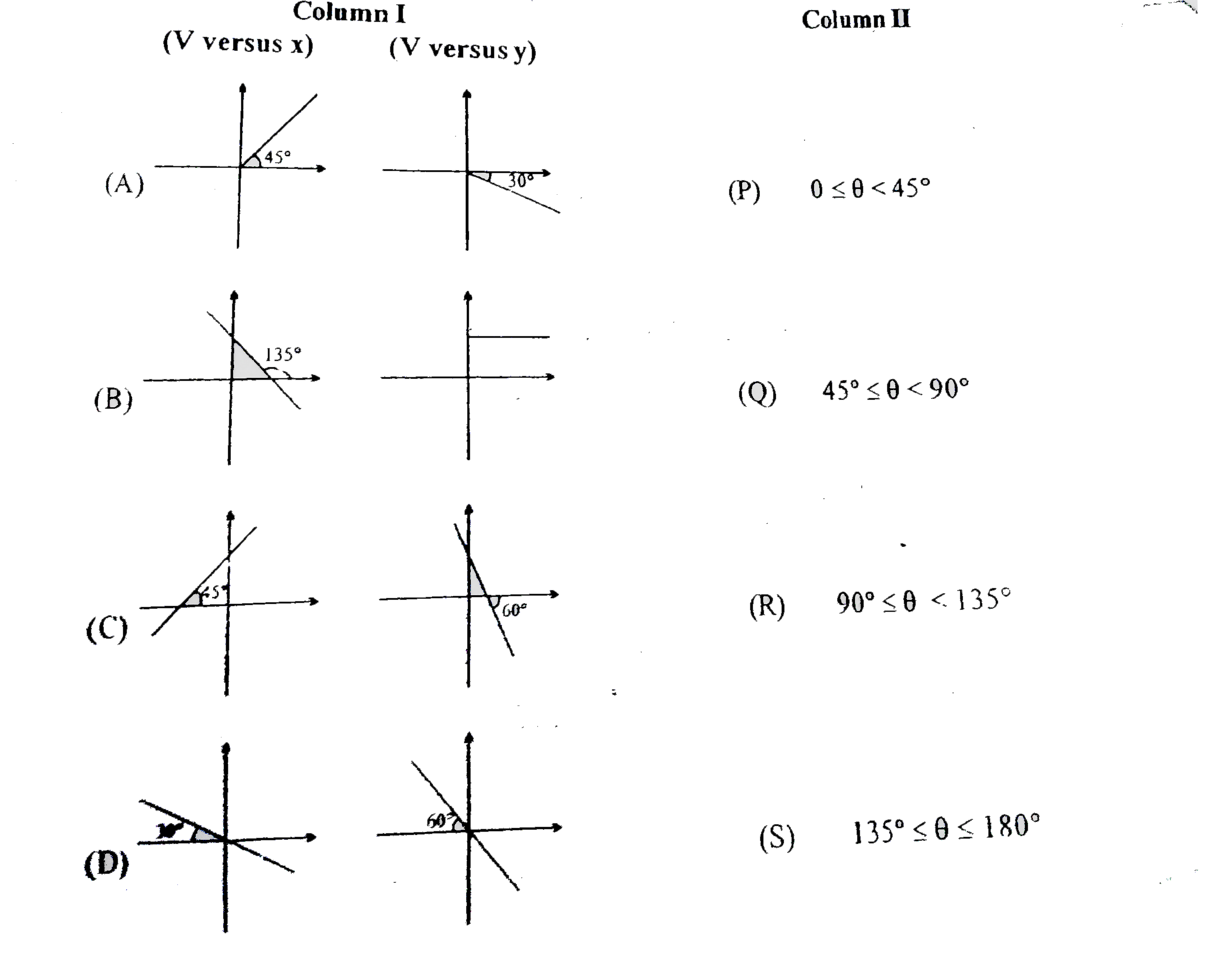
View SolutionColumn I shows four current configurations Match each entry of column I with those axes in column II along which the magnetic field at origin has positive component
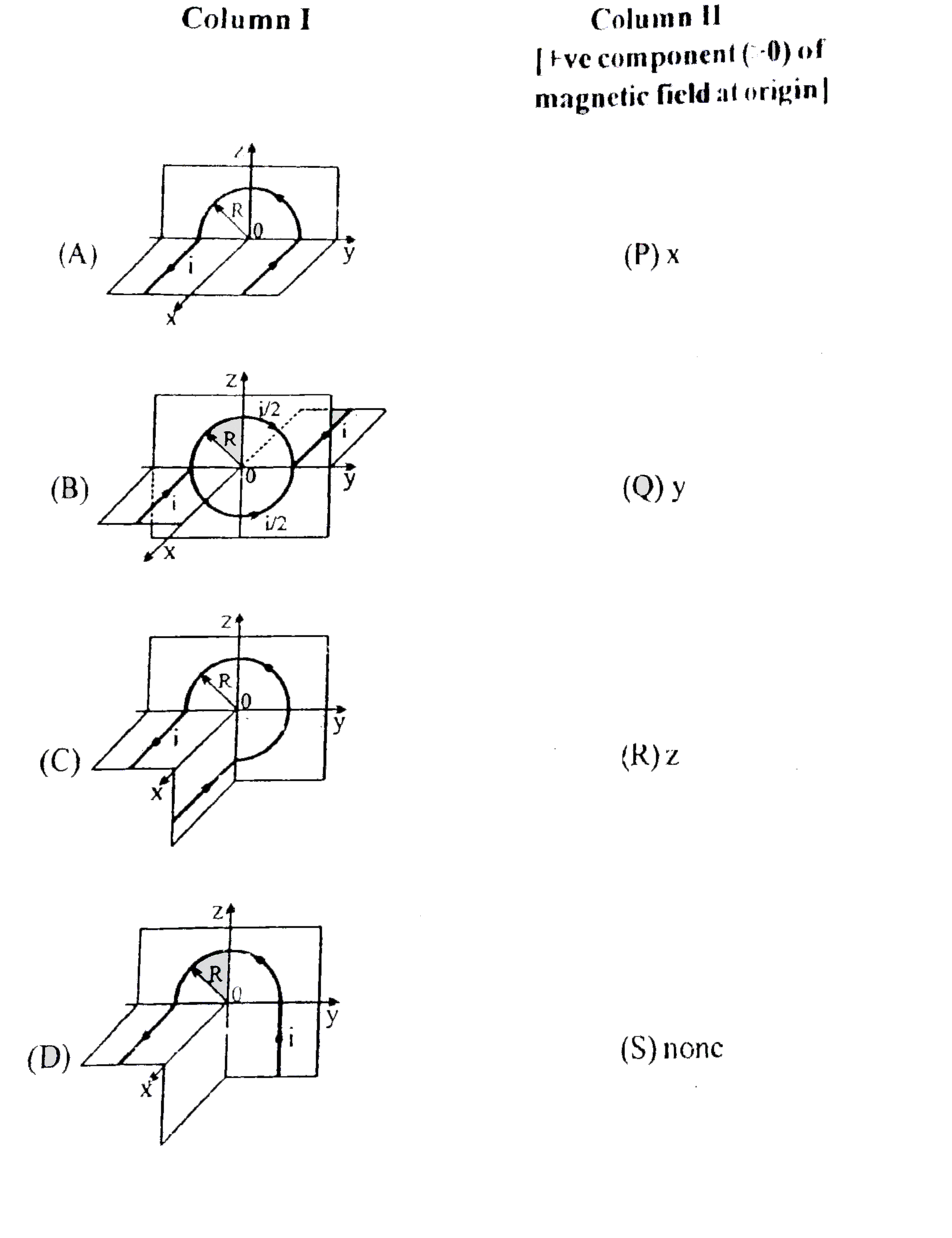
View Solution
Knowledge Check
The figure gives the electric potential V as a function of distance through five regions on x-axis. Which of the following is true for the electric E in these regions ?
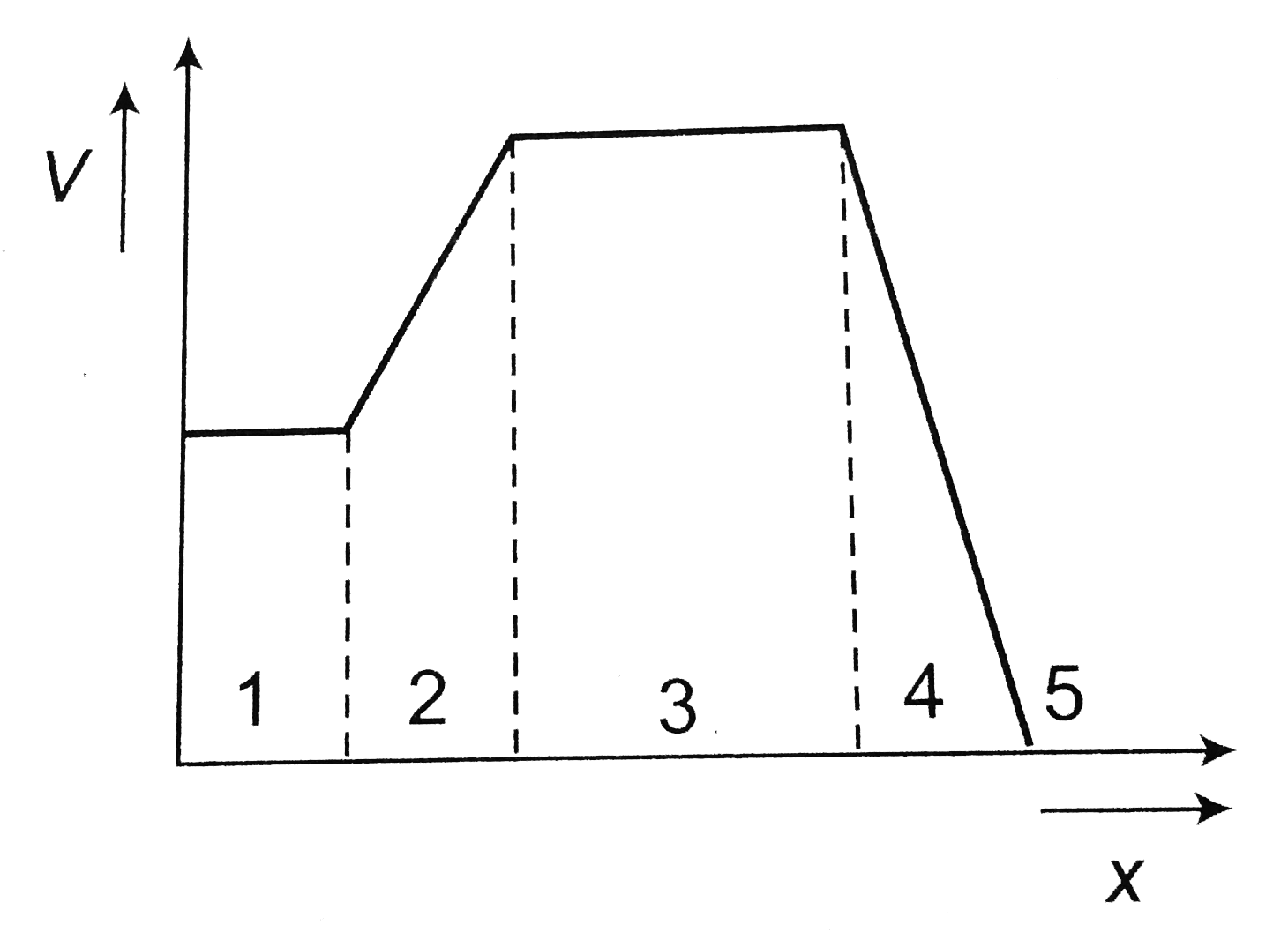 AE2=E4,E5=0andE3>E1BE1=E3,E5=0andE2<E4CE2=E4,E5=0andE1<E3DE1<E2<E3<E4<E5
AE2=E4,E5=0andE3>E1BE1=E3,E5=0andE2<E4CE2=E4,E5=0andE1<E3DE1<E2<E3<E4<E5The figure shows the path of a positively charged particle 1 through a rectangualr region of unifrom electric field as shown in the figure. What is the direction of electric field and the direction of deflection of particles 2,3 and 4 ?
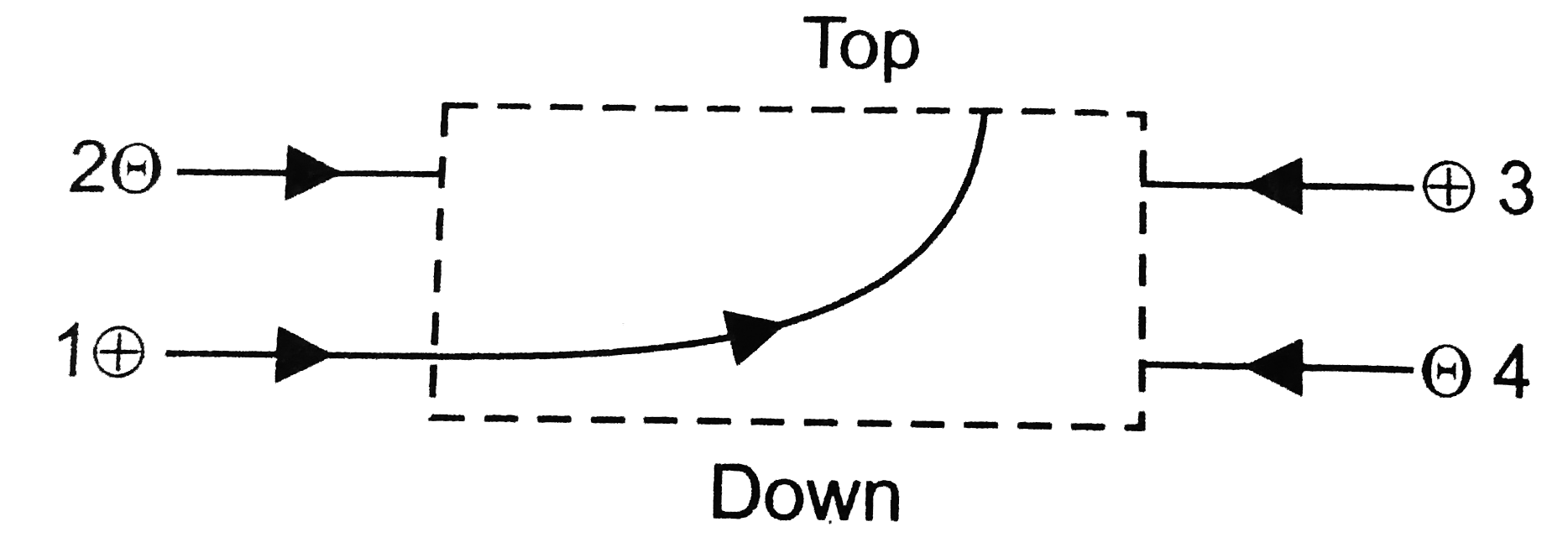 ATop, down, top, downBTop, down, down, topCDown, top, top, downDDiwn, top, down, down
ATop, down, top, downBTop, down, down, topCDown, top, top, downDDiwn, top, down, down
The electrical potential function for an electrical field directed parallel to the x-axis is shown in the given graph.
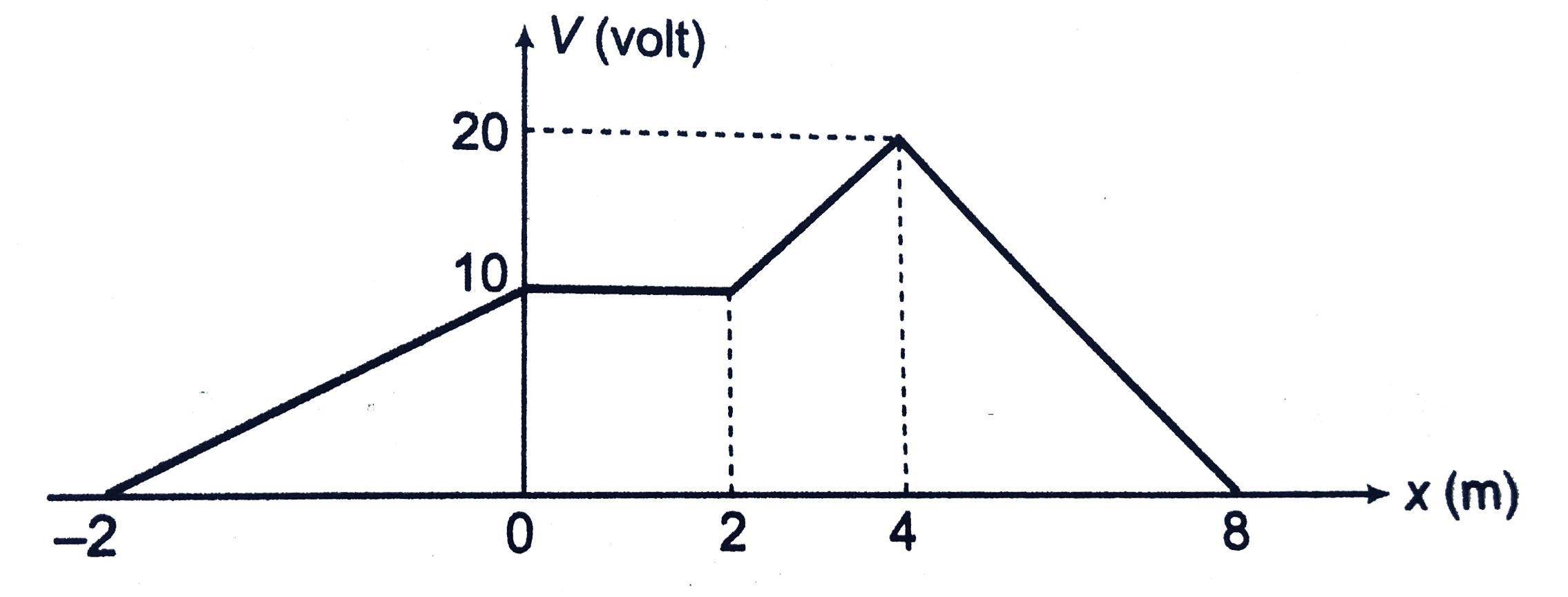 Draw the graph of electric field strength.
Draw the graph of electric field strength.
View SolutionElectric potential at any point in a region is given as
V=5x+3y+√15z
In this region the magnitude of the electric field is:
View SolutionElectric potential in a particular region of space is V=12x−3x2y+2yz2 .What is the magnitude of electric field at point P(1m,0,−2m) in N/C)?
View SolutionIn a certain region of space the electric potential V is known to be constant. Is the electric field in this region (a) positive (b) zero ,or (c ) negative ?
View SolutionColumn I shows different charge distributions and short electric dipole at a distance x from the charge distributions. Column II gives the dependence of force acting on the dipole as of function of x.

View SolutionIn a certain region of space, the electric potential is V(x,y,z)=Axy−Bx2+Cy, where A, B and C are positive constants.
(a) Calculate the x, y and z- components of the electric field.
(b) At which points is the electric field equal to zero?
View Solution
